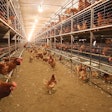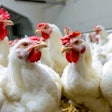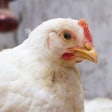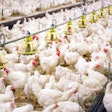
Things have never been better for China's broiler and egg industries, as the International Poultry Forum China held July 12-13, 2019, in Yantai, China, highlighted. Record profits and demand are being driven by the lack of availability of pork (due to African swine fever), with one major broiler producer reporting record profits in 2018 and again in the first quarter of 2019. With tightening stocks, reduced availability of pork and lack of alternatives, the promise is for more to come.
Investing in the future
Production costs in China, however, remain stubbornly high due to government supports of the grain industry, the requirement to import proteins such as soybeans and surprisingly high labor costs. With growing restrictions on antibiotic usage and consumer demands for transparency, Chinese producers look to invest for the future.
China is also home to several artificial intelligence (AI) superpowers, and Chinese internet giants Baidu, Alibaba and Tencent (BAT) are investing heavily in this agriculture, including animal production. Alibaba’s futuristic 70 grocery stores (Hema or Freshippo) point to a future with a growing role for robots and automation. Fresh meat and eggs on the shelf come with a digital price tag that changes as required, but also allows shoppers to scan the item, see its origins, details of where it was grown and how it was produced. Customers can pay with the swipe of a phone, or through facial recognition. Walmart has partnered with IBM to deliver blockchain within their food chain, and this commitment started in China, but is now quoted as a global example of farm-to-fork transparency.
The future of technology in China
Chinese startup AgNet is focused on data-based poultry farming. Sensors within the house measure temperature, ammonia and carbon dioxide in real time and allow a cloud-based management system to feed back the information. In the future, data streams will include acoustic warnings, and camera vision-based systems like those being used today for cows and pigs. Microbiome chips inform Cargill what bacterial shifts are taking place on the farm, allowing for tailored nutrition and feed additives to the changes the farm wishes to see. The fully blockchain GoGo chicken is already with us in China (albeit at a price of $10 per kilogram, not within everyone’s reach). CP has embraced the concept of robotized processing plants in China, automating many of the functions typically requiring human intervention.
So what is the future of poultry technology in China? Clearly the industry has several significant incentives to aggressively implement innovations. Improving feed efficiencies and gain through real-time data analytics reduces the cost of the most critical input: the feed. Alltech’s annual feed survey reports Chinese feed price as twice that of the U.S. or Brazil. Reducing labor cost is becoming very important with availability, and cost being a greater challenge, especially in processing plants. The native fear Chinese consumers have of consuming locally produced foods opens the opportunity for technologies that promise transparency. Is it no wonder that the billion dollar Chinese companies — BAT — are placing their bets in the food and farming industry, and combined with a vibrant startup world, promise a very different type of chicken farming future.
Make plans to take a look at the future of the poultry industry
Join an exclusive international gathering of industry-changing innovators, researchers, entrepreneurs, technology experts, investors and leading poultry producers at Poultry Tech Summit on November 20-22, 2019.
Poultry Tech Summit focuses on the transition of innovative technologies from researchers and entrepreneurs into commercial applications for the benefit of the poultry industry. Make plans to attend and take a look at the future of the industry. Early bird registration is now open.


















